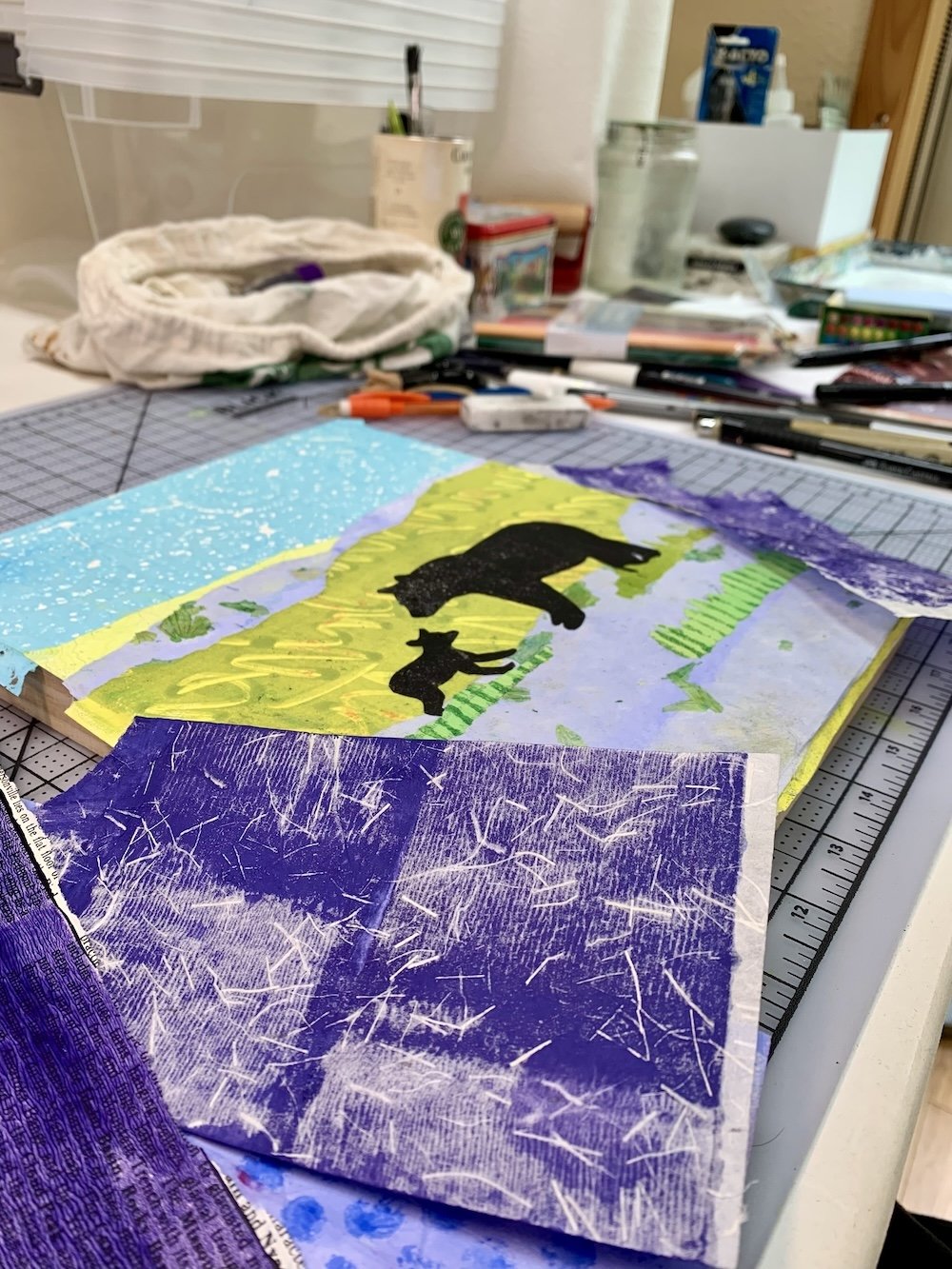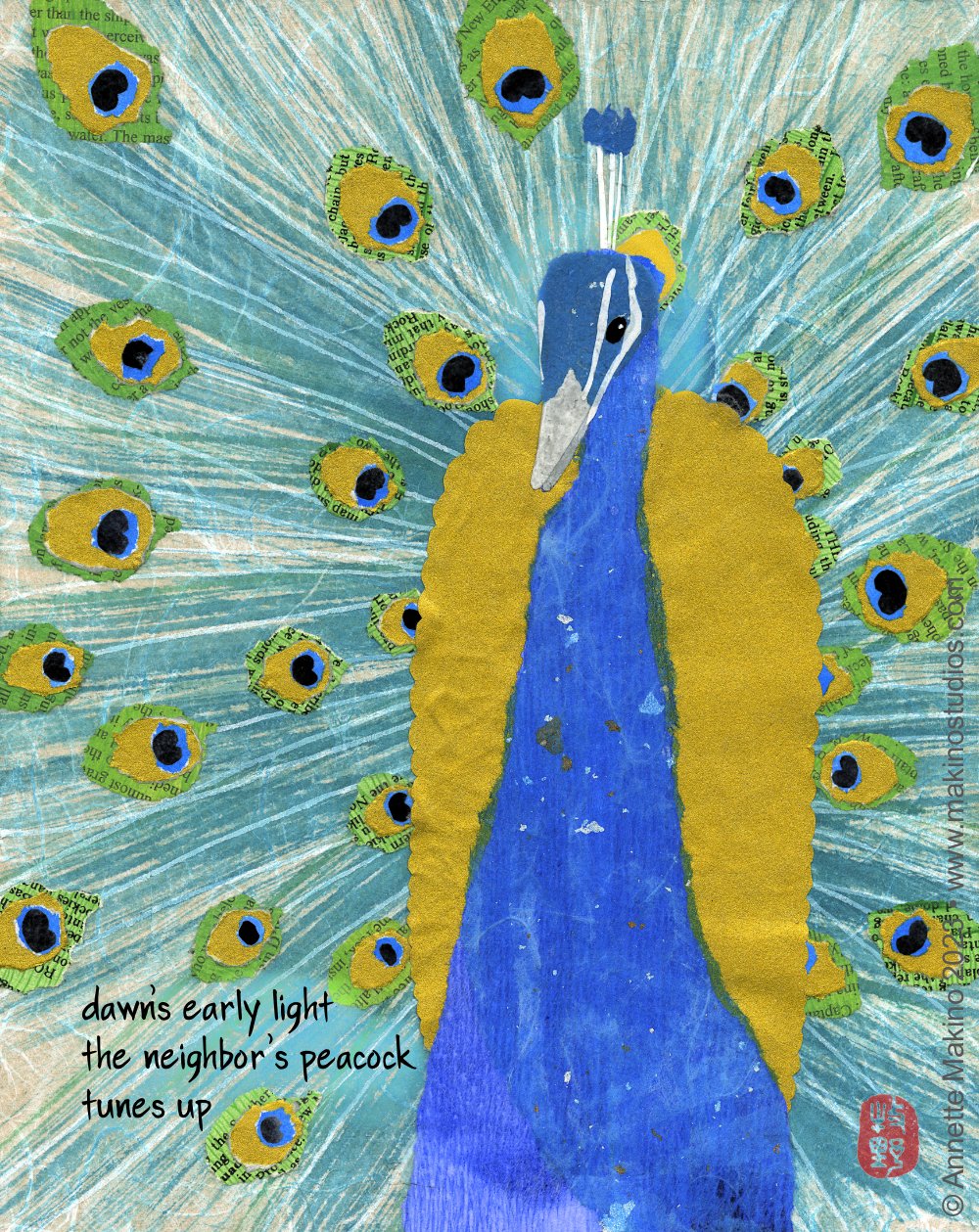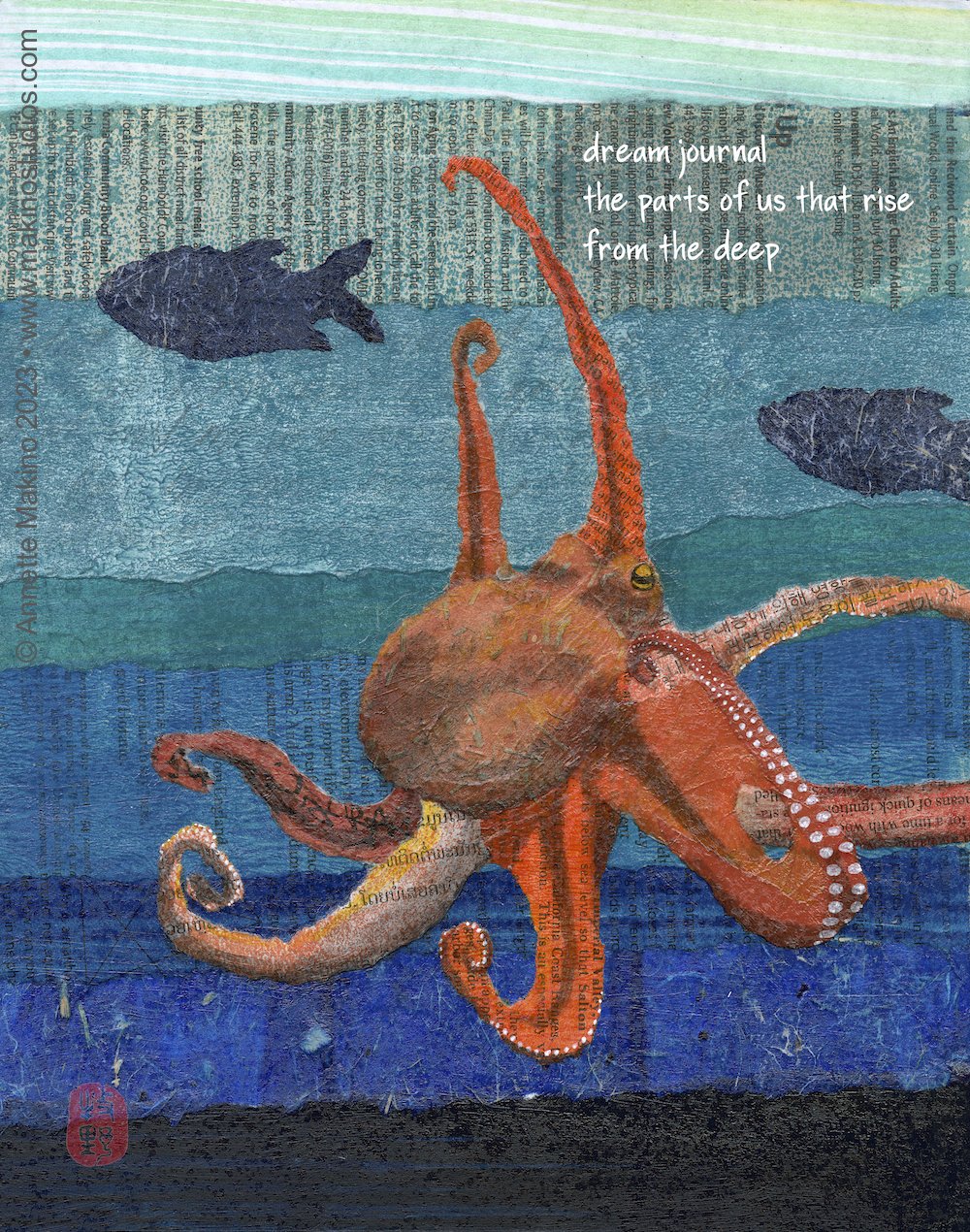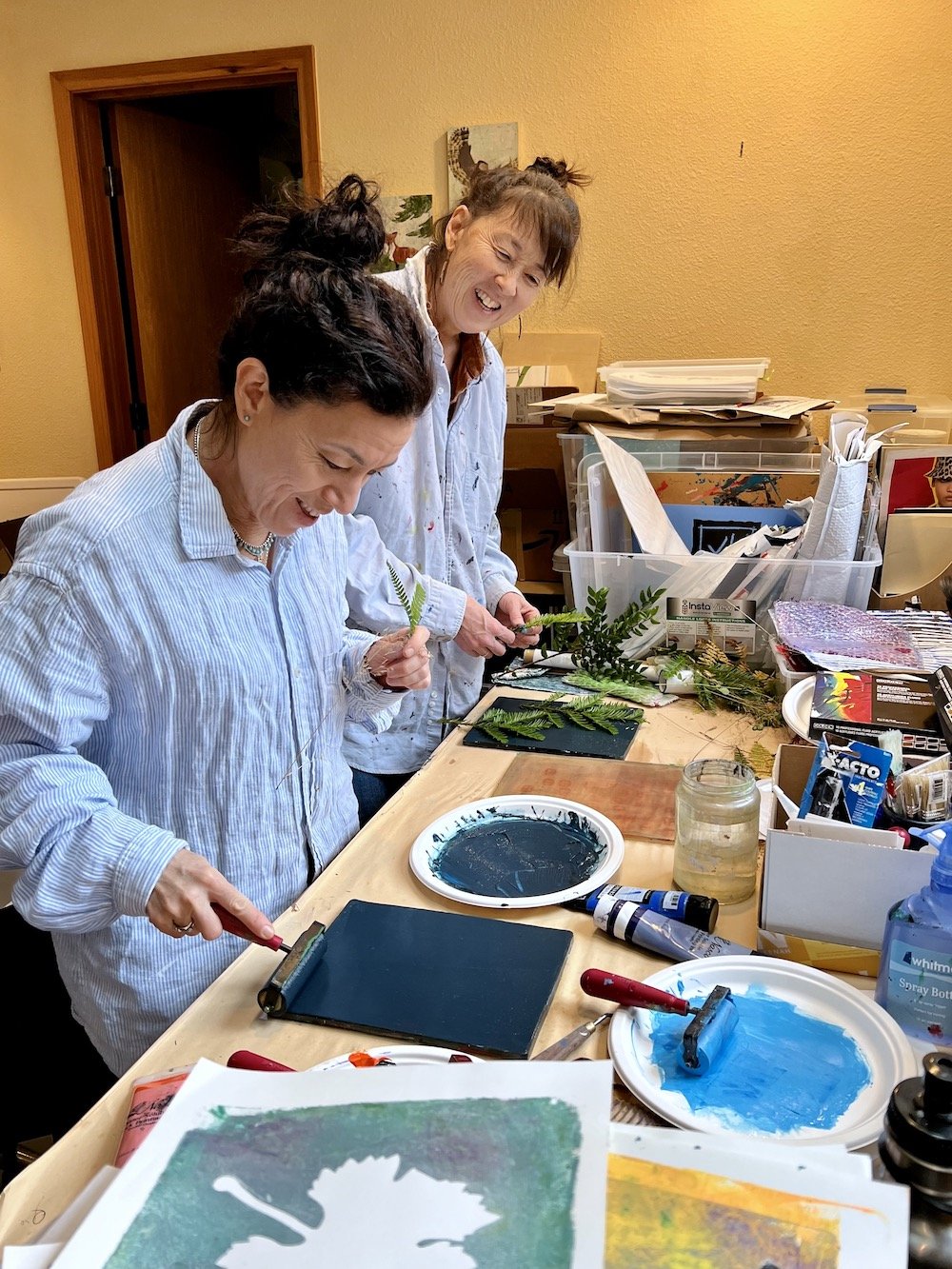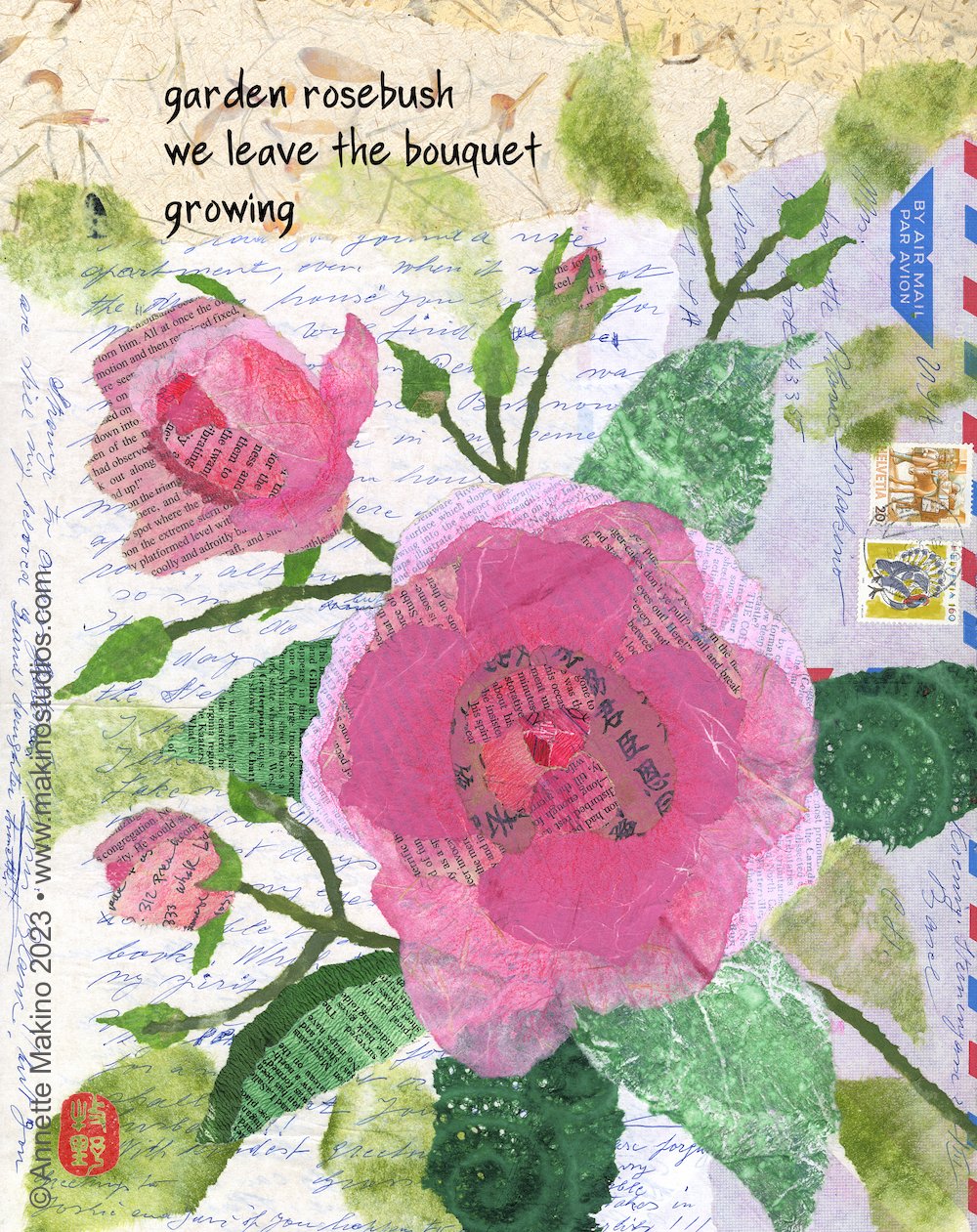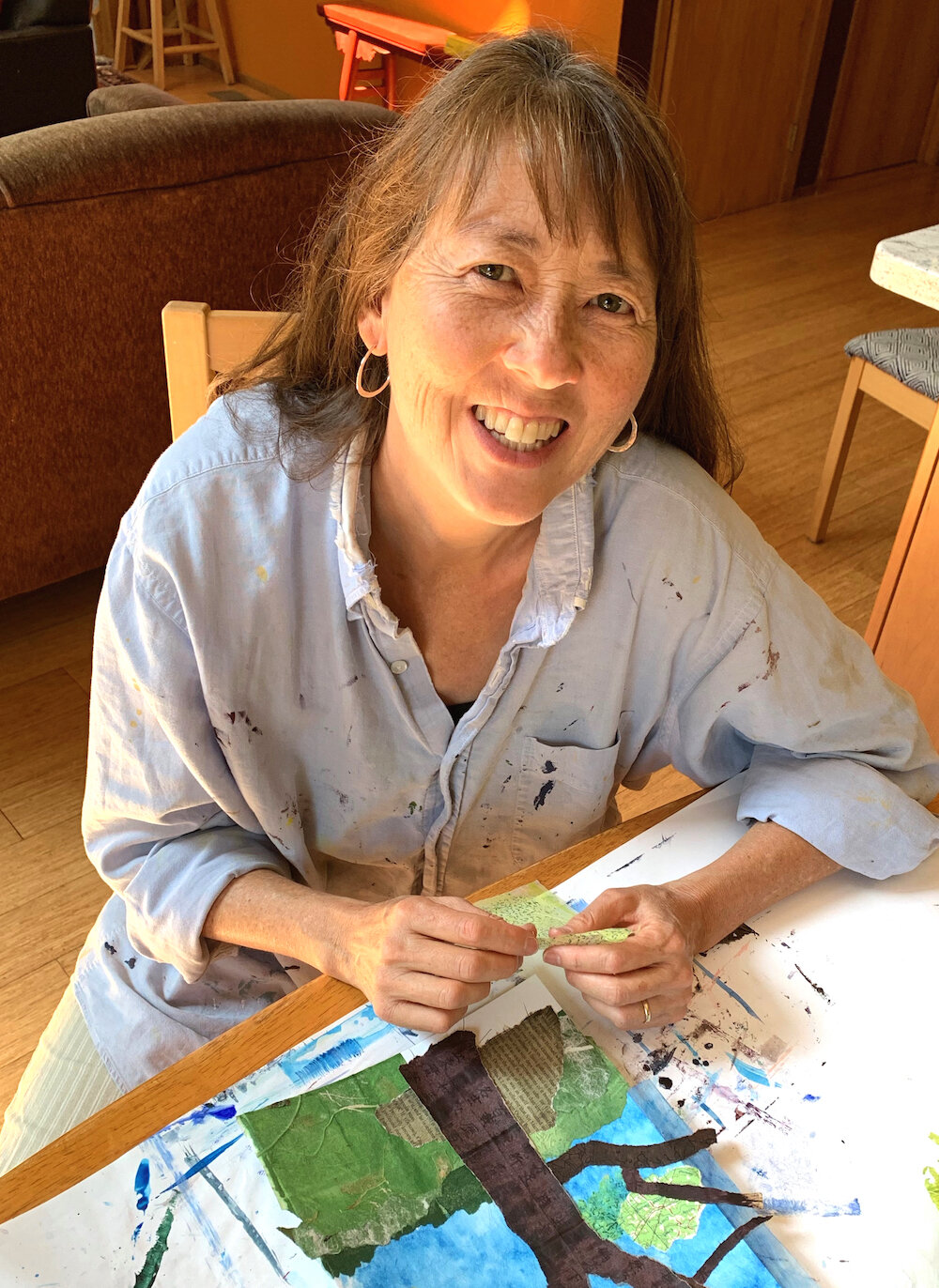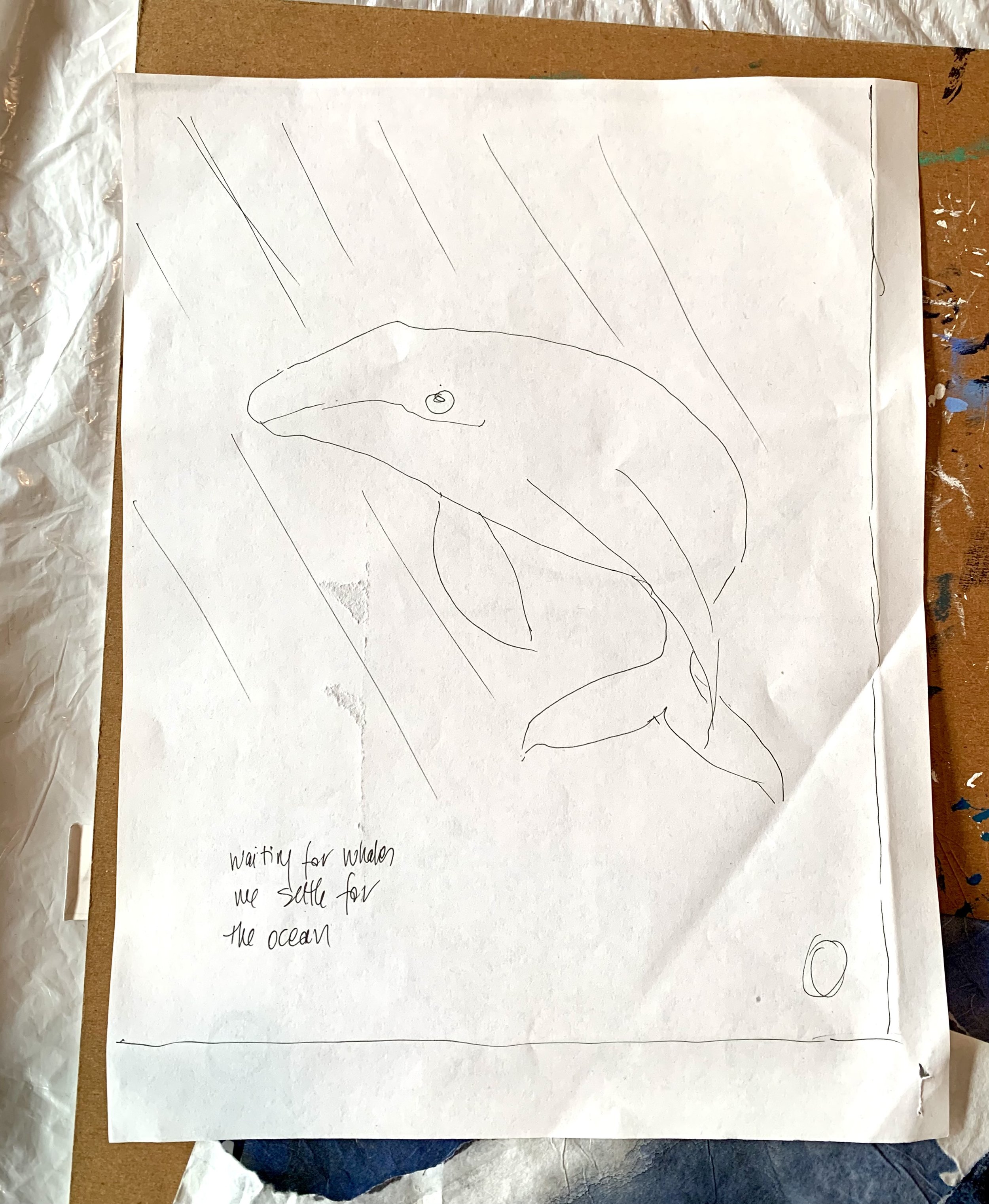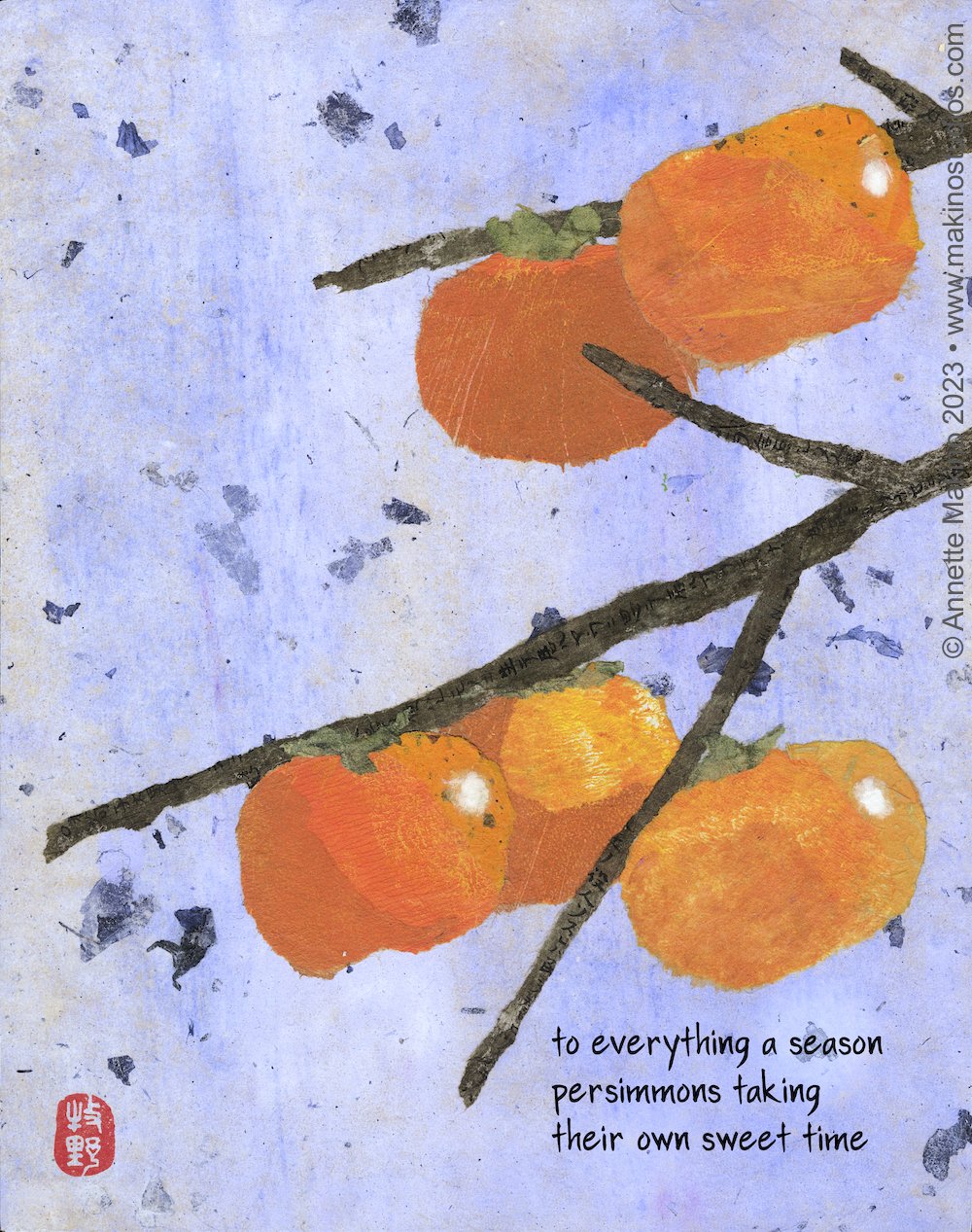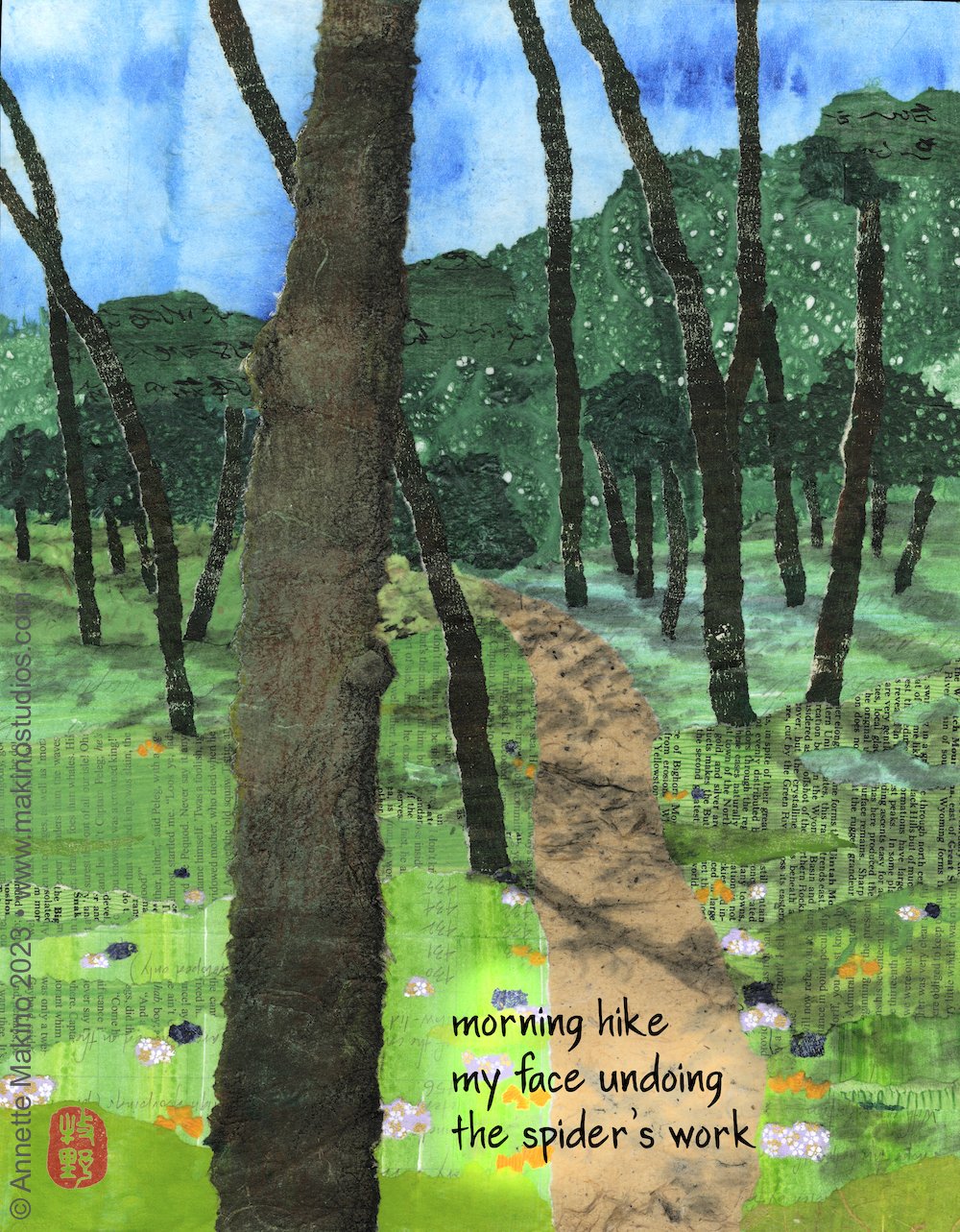“fields of lupine” is 8x10, made with acrylic paint, washi paper, part of a map, colored pencils and glue on cradled wood. It is part of the 2024 Makino Studios calendar. A card version reads, “love you, mama bear.” © Annette Makino 2023
Today is the 13th anniversary of Makino Studios! A huge thank you to all the customers, store buyers and fans who have made this art business possible for a lucky thirteen years. To celebrate, I’m offering 13% off everything in the store though this Sunday with code 13YEARS.
And tomorrow marks the official return of spring! Here in Northern California, it’s been a very dark and soggy winter, which has inspired many a haiku about the relentless rain.
cold winter rain
the swollen creek also
rushing home
At times it seemed even the wildlife was complaining about the weather.
wild geese
kvetching across the sky
March bluster
Over the winter, algae colonized the outside of my Prius while mold made itself comfortable inside. Those were solvable problems, but in far worse news, a mysterious leak completely destroyed the electrical system in my husband’s eight-year-old RAV4. So far his car has spent six weeks at the repair shop; it seems the insurance company is going to call it a total loss. Perhaps these were signs to just sit out the winter at home by the fire . . .
Starting work on the collage above.
Pale and moldy ourselves, we’ve been grasping at every hint of spring—the first trillium blooming along the creek, the earliest cherry blossoms unfurling along our road. These past few days we’ve reveled in the precious sunshine, gardening and taking walks.
I used colored pencils to add subtle light and dark accents to the bears.
My husband, son and I did a favorite hike last week, the Lyons Ranch loop in Redwood National Park. A couple of springs back, we saw a black bear cub from that trail, prompting a long, nervous pause as we tried to spot the mother. (She was nowhere to be seen, and we continued without incident.) The collage and haiku featured here came out of that experience.
Here’s hoping you survived the long winter better than our cars did. Happy spring equinox!
fields of lupine
against all odds
spring again
•
Almost done, just considering different purple papers for the lupines.
Makino Studios News
Anniversary sale: Take 13% off everything in the Makino Studios shop through midnight on Sunday, March 24. Enter promo code 13YEARS at checkout.
New! Custom prints: By customer request, I've made some designs available in my shop as prints in several sizes that you can order on demand. If there’s a piece you’d like to order that you don’t see there, let me know.
Vacation plans: I will be taking a break and not filling orders April 5-26. Sorry for any inconvenience. Stock up now!
Mother’s Day and graduation: I’ve printed cards for Mother’s Day (May 12) and graduation (Cal Poly Humboldt commencement is May 11). Browse all 70-some card designs and notecard sets.
Social: I’ve mostly given up on Twitter/X (at least until it gets a less toxic owner), but I regularly post art, haiku, news and more on Instagram as @annettemakino and on Facebook as Makino Studios (links below). See you over there!
•
Haiku credits: “cold winter rain” - tinywords; “wild geese” - The Heron’s Nest; “fields of lupine” - 2024 in art and haiku by Annette Makino





